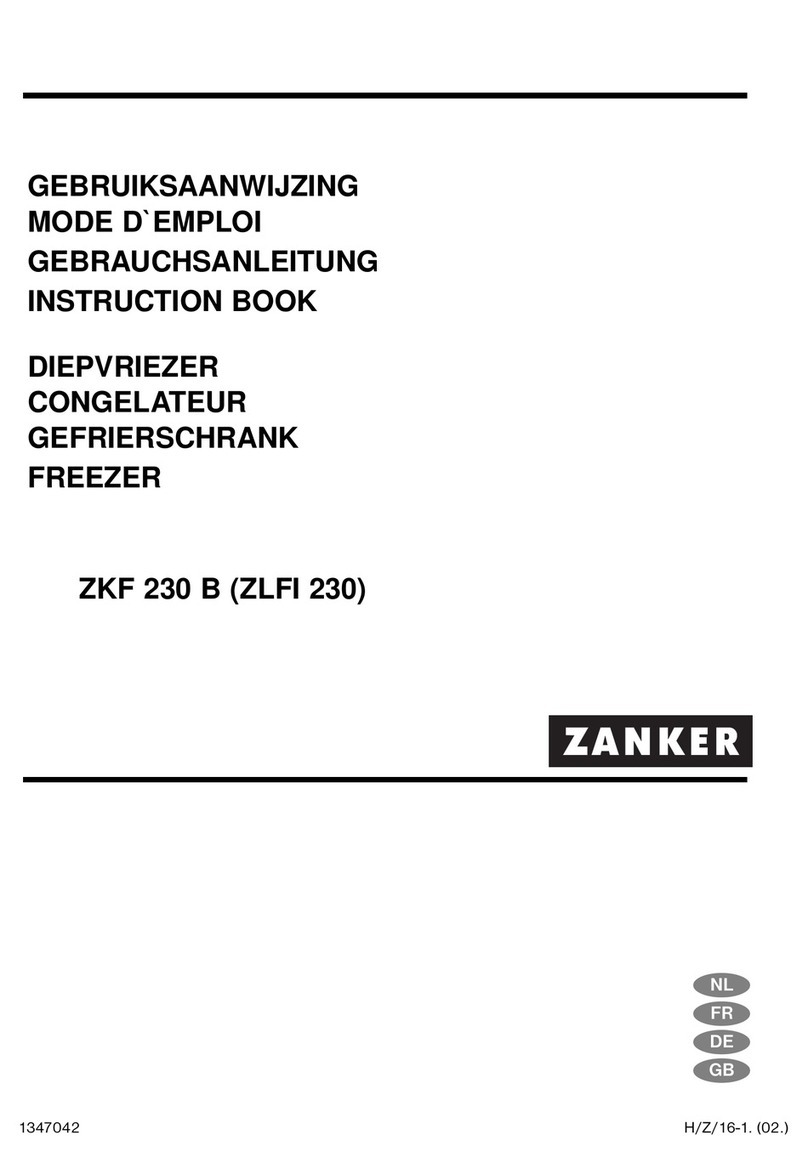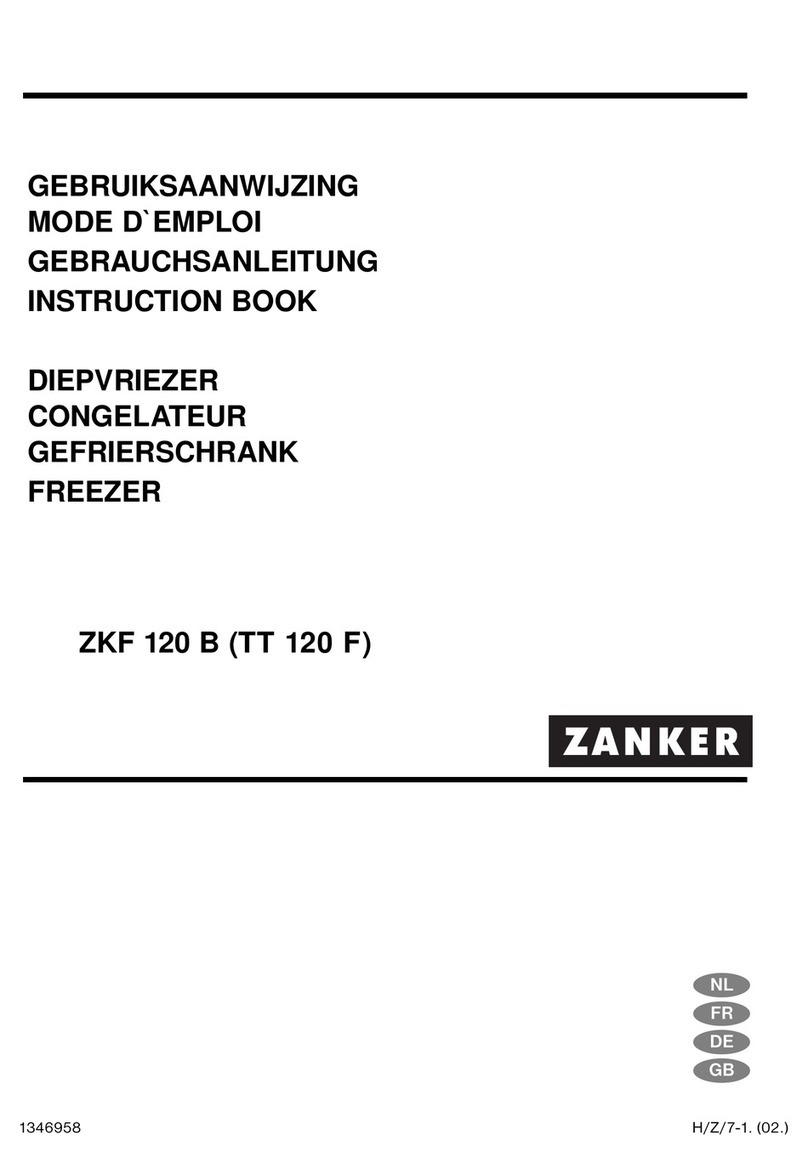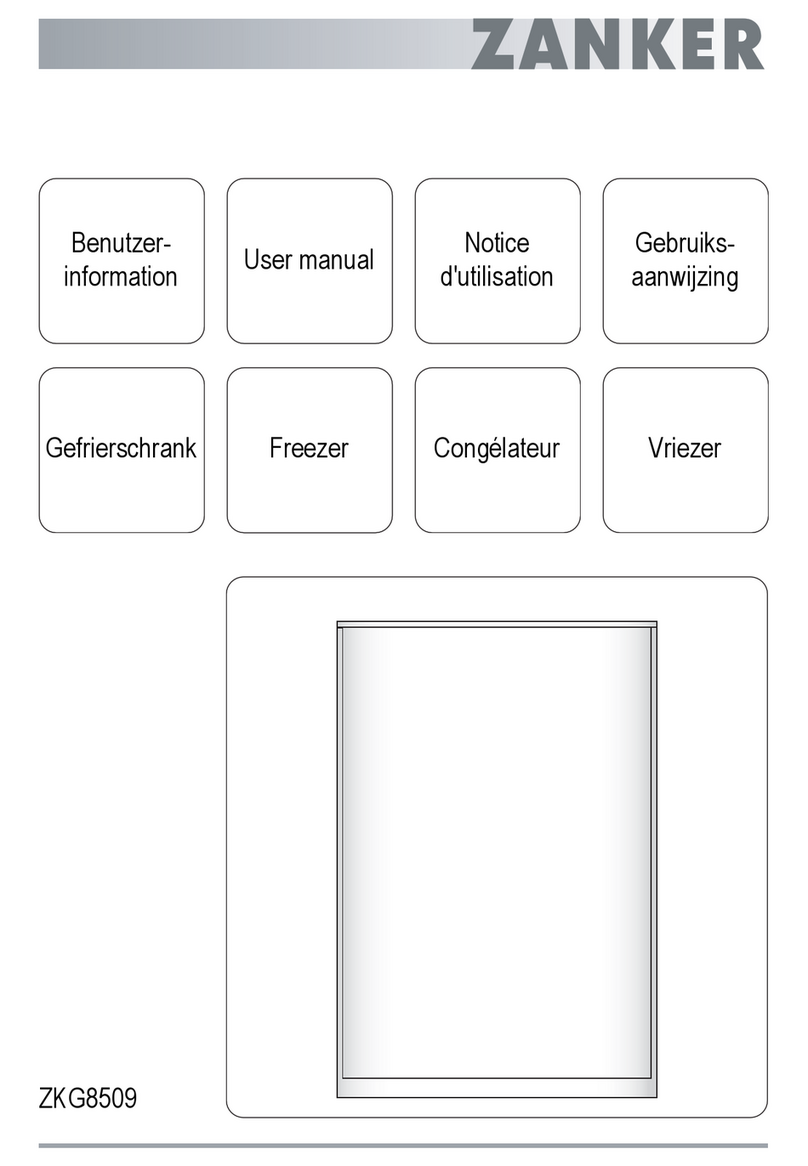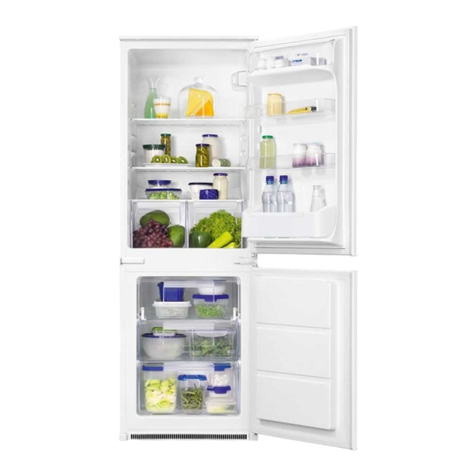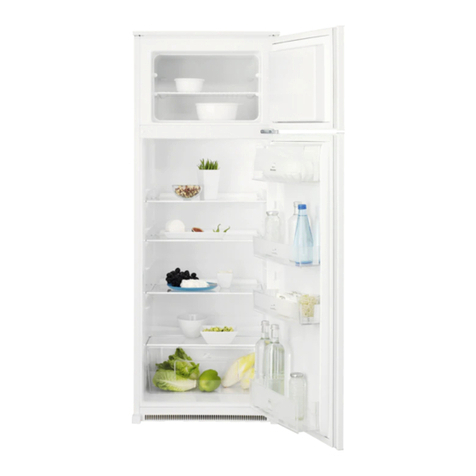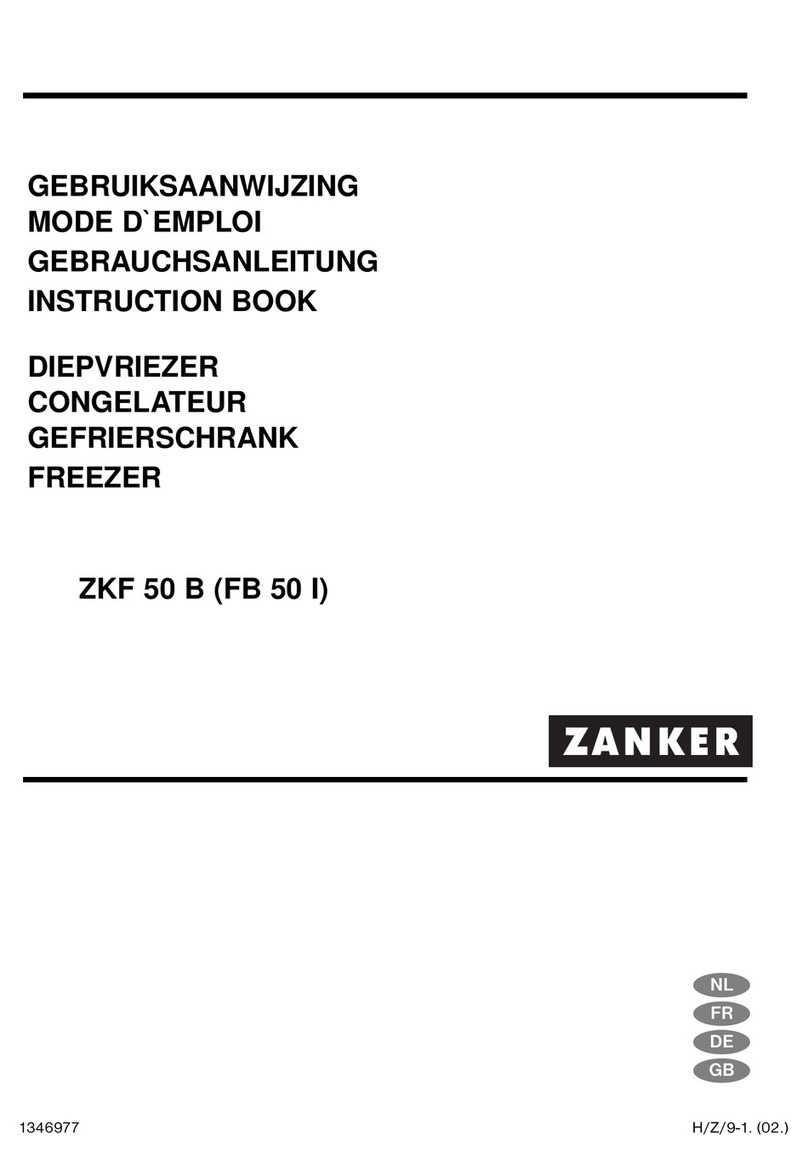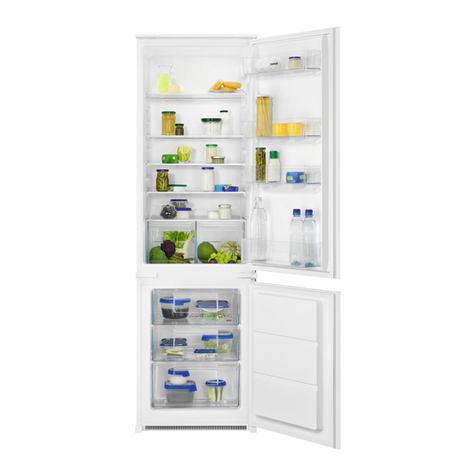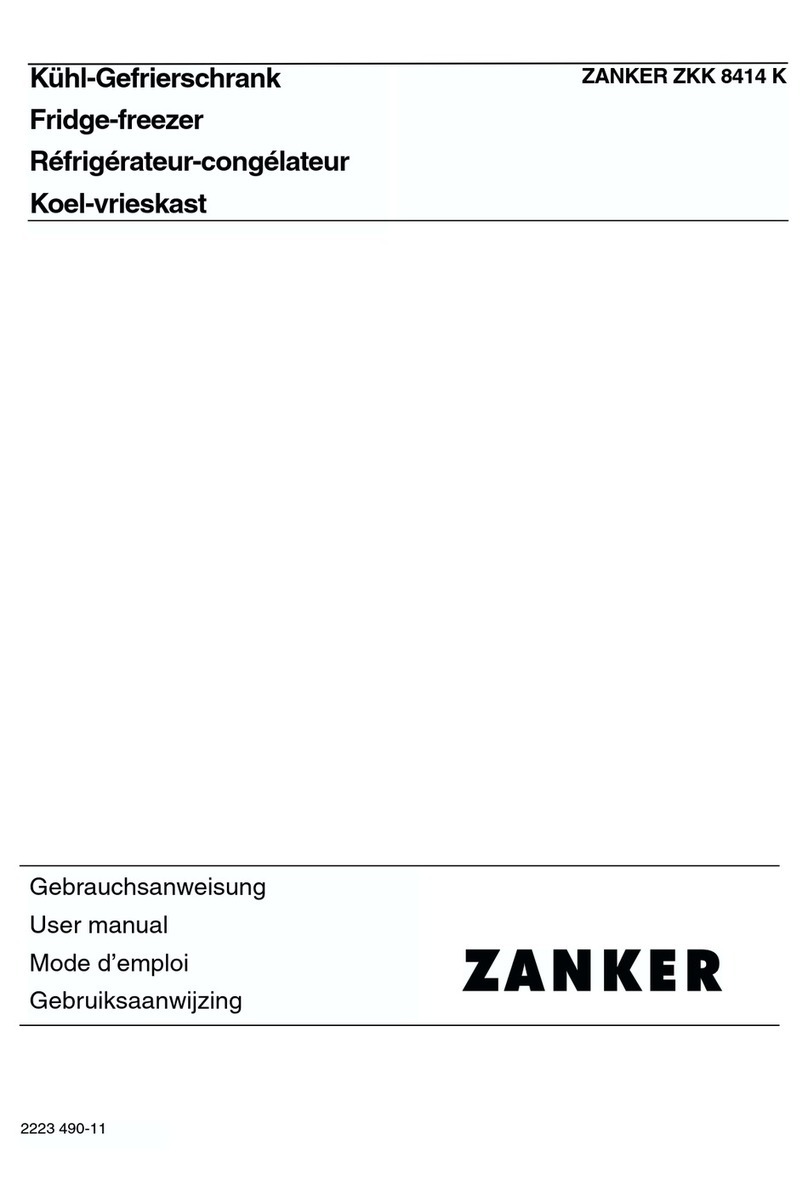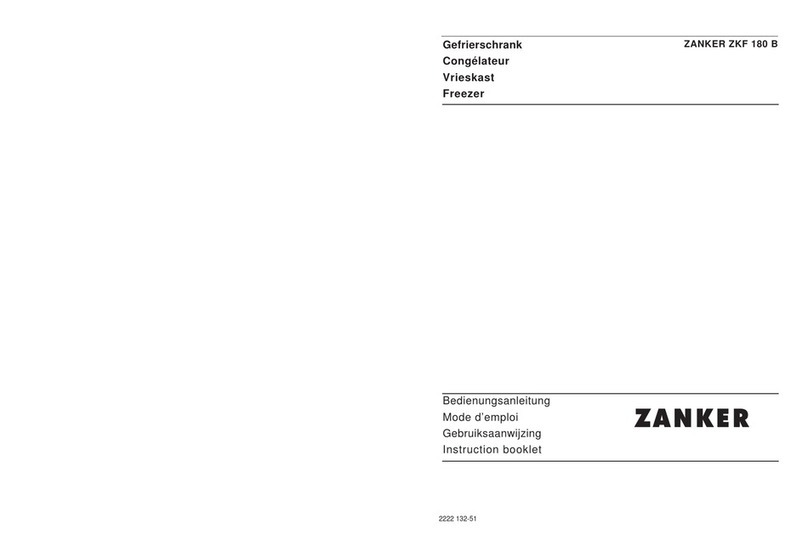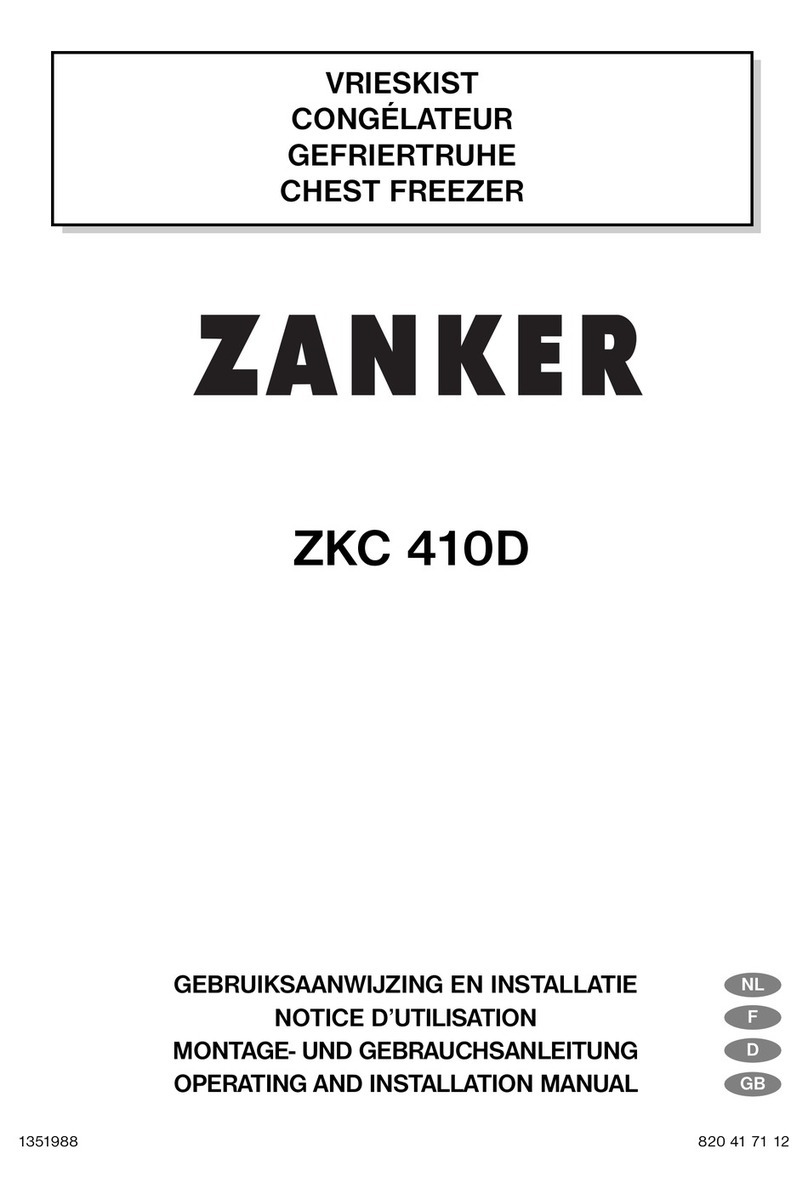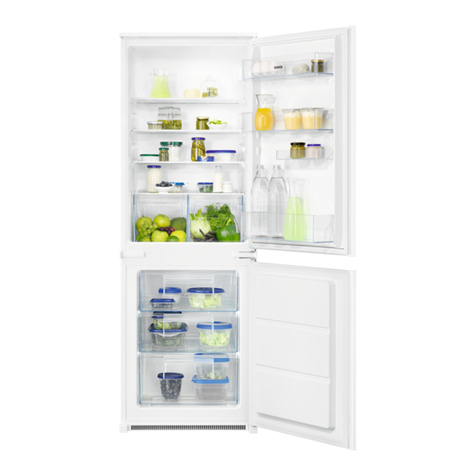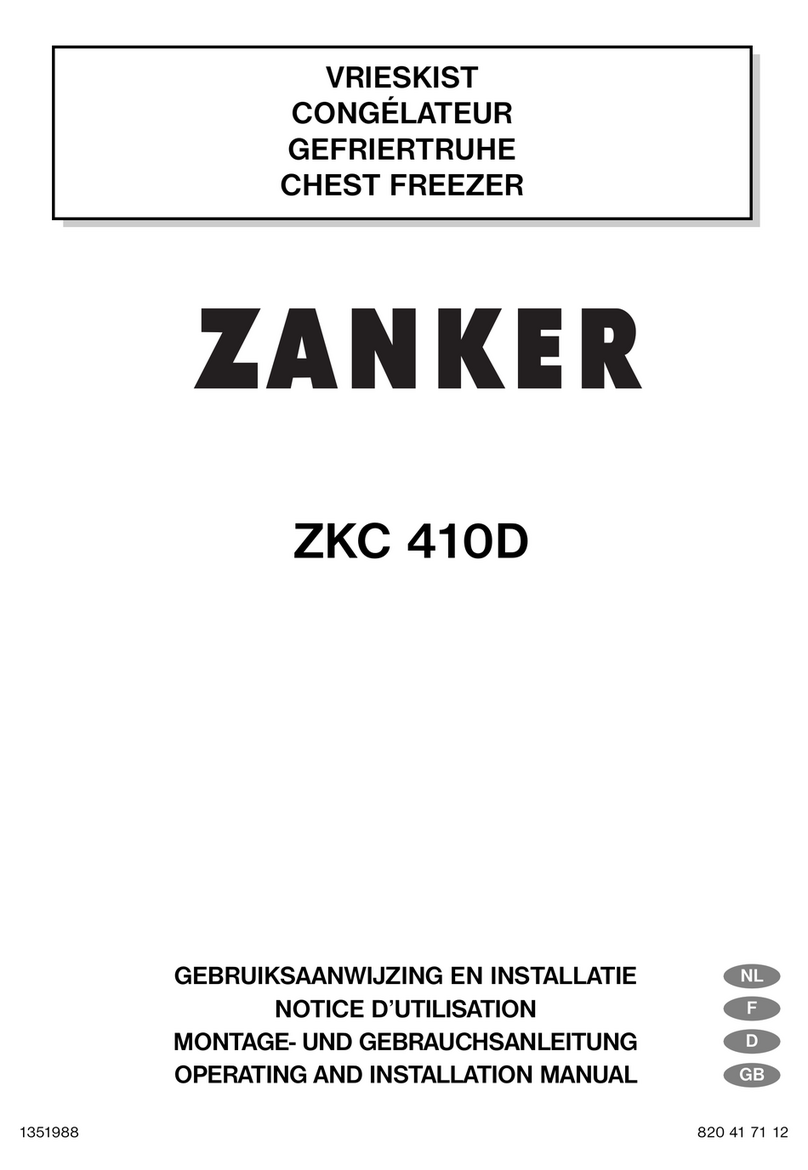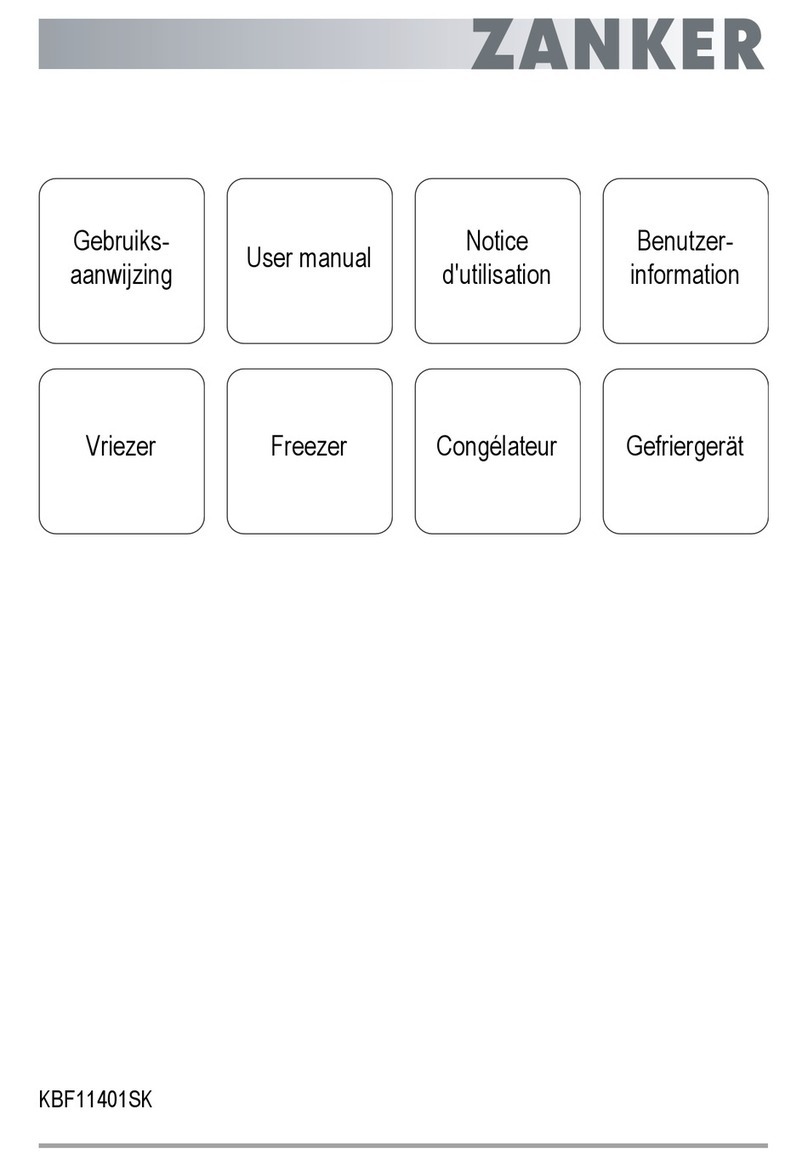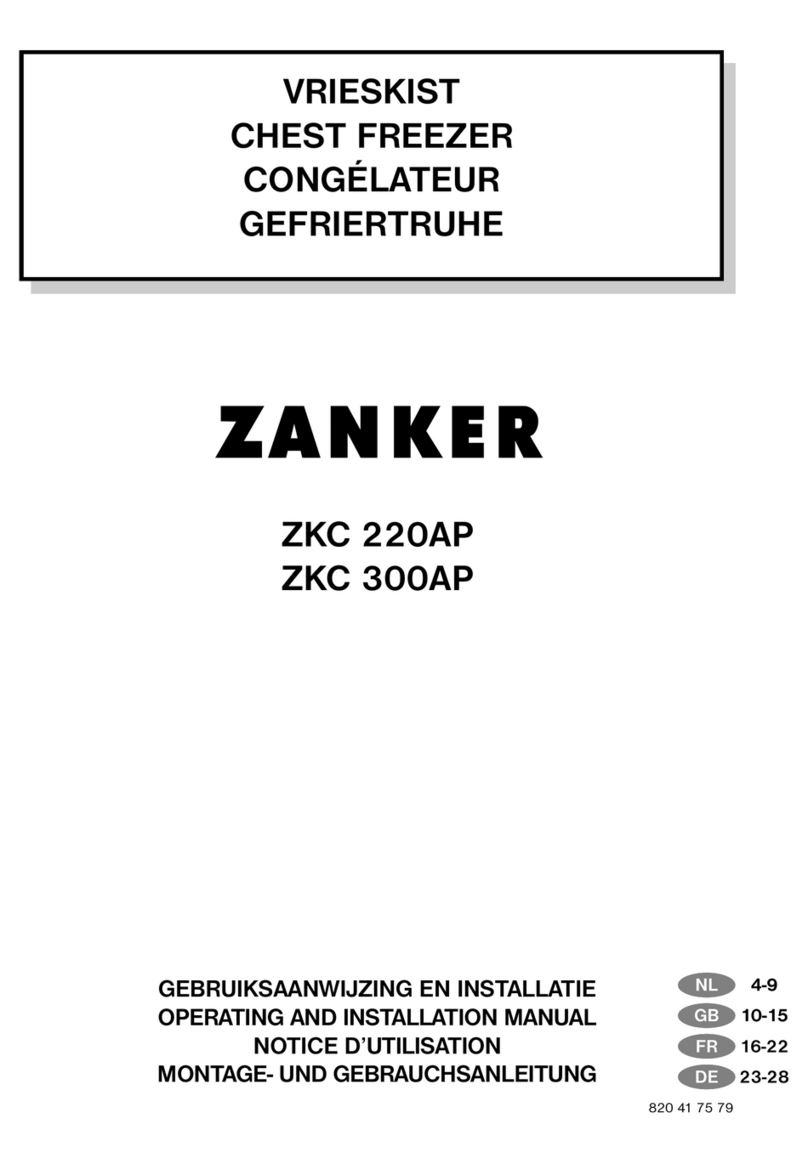16
GB
Cooked Dishes: ie. casseroles should be
refrigerated and used up.
Large Pieces of Meat: Can be re-frozen providing
there are still ice crystals
remaining within them.
Small Joints: Should be cooked and can then
be re-frozen as cooked dishes.
Chicken: Should also be cooked and re-
frozen as a cooked dish.
HOW TO CHANGE THE BULB (11)
Before changing the bulb, isolate the appliance from the
electricity supply.
Unscrew the bulb, and replace it with a new bulb (max.
15W). Then reconnect the electricity supply.
Extra bulbs are available from your local Zanussi Service
Force Centre.
GUARANTEE CONDITIONS AND
SERVICE (12)
GUARANTEE
We, Electrolux, undertake that if within 12 months of the date of
the purchase this Electrolux appliance or any part thereof is
proved to be defective by reason only of faultry workmanship or
materials, we will, at our option repair or replace the same FREE
OF NY CH RGE for labour, materials or carriage on the
condition that:
The appliance has been correctly installed and used only on
the electricity supply stated on the rating plate.
The appliance has been used for normal domestic
purposes only, and in accordance with the manufacturers
operating and maintenance instructions.
The appliance has not been serviced, maintained, repaired,
taken apart or tampered with, by any person not authorised
by us.
ll service work under this guarantee must be undertaken
by an Electrolux service representative or authorised agent.
ny appliance or defective part replaced shall become our
property.
This guarantee is in addition to your statutory and other legal
rights.
Home visits are made between 8.30 am and 5.30 pm Mon-
Fri. Visits may be available outside these hours in which
case a charge will be made.
EXCLUSIONS
This guarantee does not cover:
Damage or calls resulting from transportation, improper
use or neglect, the replacement of any light bulbs,
removable parts of glass or plastic, or vacuum cleaner
drive belts, brushes or dustbags.
Costs incurred for calls to put right an appliance which is
improperty installed or calls to appliances outside the
United Kingdom.
ppliances found to be in use within a commercial
environment, plus those which are subject to rental
agreements.
Products of Electrolux manufacture which are not
marketed by Electrolux.
EEC countries. The standard guarantee is applicable but
subject to the owners responsibility and cost to ensure the
appliance meets the standards set by the Country to which
the product is taken. Proof of purchase may be required.
DECLARATION OF GUARANTEE
TERMS
Our appliances are produced with the greatest of care.
However, a defect may still occur. Our consumer services
department will repair this upon request, either during or after
the guarantee period. The service life of the appliance will
not, however, be reduced as a result.
This declaration of guarantee terms is based on European
Union Directive 99/44/EC and the provisions of the Civil
Code. The statutory rights that the consumer has under this
legislation are not affected by this declaration of guarantee
terms.
This declaration does not affect the vendor's statutory
warranty to the end user. The appliance is guaranteed within
the context of and in adherence with the following terms:
1 In accordance with provisions laid down in paragraphs 2
to 15, we will remedy free of charge any defect that
occurs within 24 months from the date the appliance is
delivered to the first end user.
These guarantee terms do not apply in the event of use
for professional or equivalent purposes.
2. Performing the guarantee means that the appliance is
returned to the condition it was in before the defect
occurred. Defective parts are replaced or repaired. Parts
replaced free of charge become our property.
3. So as to avoid more severe damage, the defect must be
brought to our attention immediately.
4. pplying the guarantee is subject to the consumer
providing proof of purchase showing the purchase
and/or delivery date.
5. The guarantee will not apply if damage caused to delicate
parts, such as glass (vitreous ceramic), synthetic
materials and rubber, is the result of inappropriate use.
6. The guarantee cannot be called on for minor faults that
do not affect the value or the overall reliability of the
appliance.
7. The statutory warranty does not apply when defects are
caused by:
- a chemical or electrochemical reaction caused by
water,
- abnormal environmental conditions in general,
- unsuitable operating conditions,
- contact with harsh substances.
8. The guarantee does not apply to defects due to transport
which have occurred outside of our responsibility. Nor
will the guarantee cover those caused by inadequate
installation or assembly, lack of maintenance or failure to
respect the assembly instructions or directions for use.
9. Defects that result from repairs or measures carried out by
people who are not qualified or expert or defects that result
from the addition of non-original accessories or spare parts
are not covered by the guarantee.
10. ppliances that are easy to transport may be delivered or
sent to the consumer services department. Home repairs
are only anticipated for bulky appliances or built-in
appliances.
11. If the appliances are built-in, built-under, fixed or
suspended in such a way that removing and replacing
them in the place where they are fitted takes more than
half an hour, the costs that result therefrom will be
charged for. Connected damage caused by these
removal and replacement operations will be the
responsibility of the user.


